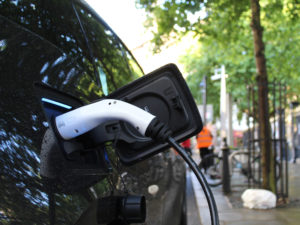Learn Where Your Energy Comes From
While flipping the light switch in your bedroom instantaneously illuminates it or plugging an electric car in immediately starts charging it, the processes which have allowed for those technologies to be commonplace in homes today are far more complex. It is important to recognize the energy required to facilitate on-demand residential, commercial, and industrial power and the impact that generating, distributing, and using that energy has on our environment.
The energy process begins at a power plant that generates electricity from burning coal and natural gas, or increasingly from wind turbines, solar panels, hydropower turbines, and biomass. The power plant then transmits voltage through a transformer to transmission lines. These transmission lines carry electricity from the power plant to another transformer in your neighborhood that transmits it to distribution lines connected to you and your neighbors homes.
In Duluth, you pay your monthly home electric bills to Minnesota Power—a large investor-owned utility company based in Duluth, but which also supplies electricity to much of Northeastern Minnesota. Minnesota Power relies on a blend of wind, water, solar, biomass, natural gas, and coal to generate a supply of energy that is, as of 2023, made up of 53% renewable sources according to data from their most recently approved integrated resource plan from 2021 and projects completed through 2023. While Minnesota Power continues to make efforts towards its transition to a renewable future of energy generation, coal remains the backbone of its operation.
If your home’s heat is powered by the burning of natural gas, then you pay your heating bill to ComfortSystems—a City-owned utility company that provides municipal services for gas, water, sanitation, stormwater management, street lights, and overall street maintenance.
Gas relies on combustion and although it is currently cheaper per unit than electricity, natural gas is becoming more expensive every year and installation/maintenance costs are higher. Gas also releases carbon dioxide, monoxide, and methane, greenhouse gasses that are dangerous for your health. Electrifying our energy production is better for our planet’s future as it reduces the greenhouse gasses released into our atmosphere. Currently, gas infrastructure isn’t very flexible and can only be used to provide gas. On the other hand, electricity infrastructure already handles renewable and nonrenewable sources.
On the transportation front, one way to move the grid towards electrification is to increase the number of hybrid and electric vehicles (EV) on the roads to increase demand for electricity. The lifetime emissions of these vehicles are significantly less than standard gasoline vehicles. In response to this increase, electric utilities should plan for this by building more EV infrastructure, promoting off peak charging to prevent outages, and upgrading the grid. Electrification will lower emissions and decrease reliance on fossil fuels if we continue to push for a completely carbon-free power grid.
Utility companies make decisions every year about how to produce their energy. As a consumer, you can become part of the conversation about a transition to a future powered by renewable energy.
Resources:
Did you take this action? Report it!
Help us show our collective community impact by reporting that you took this action.
